The white plastic enshrouding Grenfell Tower flies by like a ghost. A year prior, in June of 2017, Masterton witnessed the fire that killed seventy-one people inside, mainly brown and poor living in subsidized housing.
“It was more than cheap cladding that caused the fire,” says Masterton, 26, back at the offices of Forensic Architecture a research agency based at Goldsmiths, University of London. There he directs an investigation into the deadly blaze, peeling back what the building might reveal, like an archeologist with a trowel.
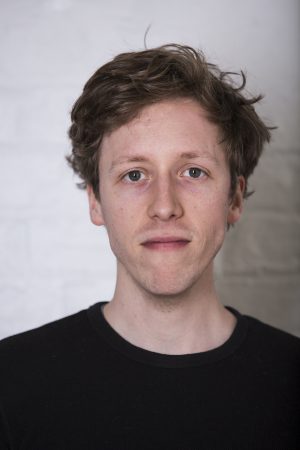
“A network of factors is to blame. Though we’re not looking for a smoking gun, it’s clear that simply writing off the disaster to cheap concrete is too simple. We suspect a lot had to do with building controls, building regulations, and oversight,” says Masterton. The objective is to create a platform, an animated timeline of the building for researchers to better understand what happened or failed to happen. His team includes programmers and journalists, equally dedicated to deciphering the writing on the wall.
“It’s a process of generating architecture from memory, based on mega data¬—not relying on one piece of shaky evidence, but constantly cross-referencing, corroborating and syncing, and ultimately creating a 3D video of the disaster. Now, most of my day involves analyzing the latest footage that people have submitted to us of the fire and comparing those clips to what we already have, satellite images, working plans, victims’ accounts.” Along with the fire footage, Masterton’s screens summons a node tree, Grasshopper and Animation Notes files, a plug-in for Blender.
The latest updates on the fire seem to confirm Masterton’s suspicions that a network of factors was to blame. They also underlinethe urgent need for the clarity that Forensic Architecture makes possible. Writing in the Guardian April 16 of this year, Robert Booth reported that a study by BRE Global that runs fire testing in the U.K. found “multiple deficiencies” at Grenfell: insulation, including lammable cladding, PVC panels, rubberized membranes, cavity barriers installed upside down, leaving dangerous gaps inside the window frames and columns, and so on. “None of the materials would be capable of providing thirty minutes fire resistance.” Moreover, 45 percent of the door closers on the 120 flats between the fourth and twenty-fourth stories were missing or not working.”
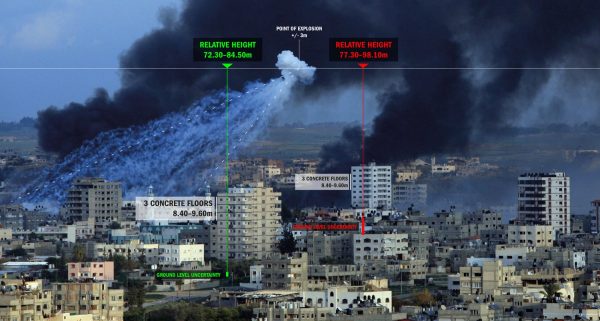
Who signed off on all this and why? Just like DNA testing and analysis, Forensic Architecture’s innovative methods may be key for Scotland Yard making a case. But what does this have to do with architecture itself?
“Architecture is not just about icons, it’s about humanity,” Masterton remarks matter-of-factly. For his generation, the built environment can no longer be said to be neutral but comes coded with all sorts of cultural biases. A more moral architecture attempts to correct them.
While forensic architects mainly provide structural analysis, the ten employees of Forensic Architecture are more like the architectural heirs of Sherlock Holmes, only on a more global scale. Founded ten years ago by British Israeli architect Eyal Weizman, 48, Forensic Architecture, or FA—as Masterton refers to it—joins a host of other human rights investigators in what many call our Age of Witness, born of the careful recording of Auschwitz testimony. These architects, anthropologists, scientists, and activist NGOs combine meta-data and high tech to uncover official violence and malfeasance, from Indonesia to the Mideast, Chile to Guatemala. Weizman’s many books include the best-seller Mengele’s Skull (in 2012 with Thomas Keenan), The Conflict Shoreline (in 2015 with Fazal Sheik), and Forensic Architecture: Violence at the Threshold of Detectability, just released in the U.S. this April.
“We go where war crimes and human rights violations have been committed, looking at the traces that violence leaves on buildings,” Masterton says. “In April of 2016, before I came to work here, FA launched an investigation with Amnesty International of the Assad regime’s Saydnaya torture prison in Syria. Only a few of those imprisoned there have left alive, and those we interviewed in Turkey. Though off-limits to any kind of inspection by journalists or monitoring groups, we were still able to get inside to ‘see’ what was going on: the corridors, windows, the cells, the entire building.”
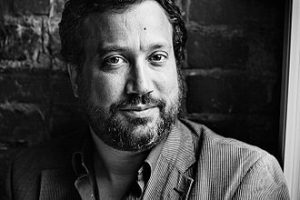
One key to the investigation was acoustic modeling. The investigators found that the former prisoners all had developed an acute sense of sound. There was hardly any light, speaking was forbidden, and the guards made them cover their eyes with their hands whenever they entered. The snap of a whip or a tread of a boot defined space, providing the kind of corroboration and cross-referencing Masterton is using to investigate the “multiple deficiencies” that befell Grenfell and most likely persist to this day in housing for the poor throughout the U.K.

“Right now, we’re putting out a call for additional Grenfell footage, even if you think it’s already been used elsewhere. We also need people familiar with Motion Tracking skills, the process of reverse engineering a camera to stabilize that footage…and, of course, additional funds,” adds Masterton.
That’s the then. Now let us consider the now and see how it may play out into the future.
While brick-and-mortar horrors like Grenfell Towers or the Syrian prison call out for our attention, current design practices demand our attention as well.
If we as designers of a global culture keep doing what we’re doing, how will we affect humanity? Speculative architect Liam Young of SCI-Arc in Los Angeles raises and responds beautifully to this question in an ongoing series of well-researched, dystopic sci-fi films. It’s writing on the wall revealed at twenty-four frames per second.

“We architects are all futurists whether we like it or not—designing things for a reality that doesn’t exist yet because our buildings will be around a long time and we have to look at them that way. At a minimum we must think at least ten years ahead,” says Young between globe-trotting jaunts. Young brings us much of that thinking ahead, based on research with his partner, the architect and artist Kate Davies.
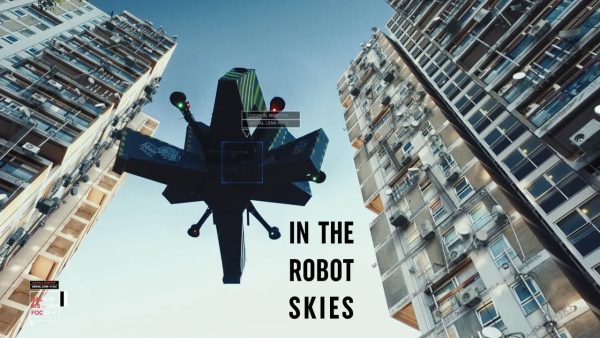
What the partners have found is a whole array of unintended consequences having to do with the built environment and modern culture. What goes into that culture’s glistening structures can be dark indeed, in their view, and change is called for now. It’s a matter of picking up the weak signals, decoding whatever writing there is on the walls, then turning those findings into cinematic stories.
Young’s films extrapolate from the architectural present to show the urban future: the furious and destructive mining for metals used ubiquitously in high tech, the millions of human robots tethered to the global supply chains, plants, ports of entry, virtual networks like Fivvr and Amazon Turk. All such transgressions impact our humanity, as Young sees it. It’s his job to reveal them, just as FA is doing with Grenfell Towers. Credit goes to his collaborators, students at SCI-ARC, Hollywood heavies in the SCI-ARC vicinity, in addition to the scientists, technologists, designers, and artists of Young’s think tank, Tomorrow’s Thoughts Today.
Young’s latest film is In the Robot Skies written by Tim Maughan, the “world’s first narrative shot entirely by autonomous drones.”
“For three hundred dollars, I can go to a toy store right now and buy a pretty good drone. Soon drones will be everywhere, like pigeons,” he says. “As architects, we need to talk about what all those digitized flocks will mean about window walls and privacy, this aerial infrastructure, how cities will need to be built in the future, what subcultures of surveillance hackers will emerge. The time to have that conversation is now because there are always unintended consequences to technology.”
While the benefits of technology are indisputable, he argues, system failure is inevitable. Now in our great urban areas, with so many systems coupled together, failure in one system could spell failure for all. Private decision-making that could adversely affect public resources has to be looked at now rather than later. And looked at long before the investment in high tech almost demands the thing be deployed full-throttle, like the reactor at Three Mile Island, or social media during tdhe 2016 Presidential election. Dragging Facebook’s chairman before the Senate is happening when the genii have already left the bottle, in Young’s view.
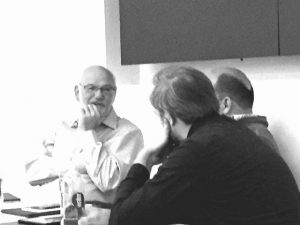
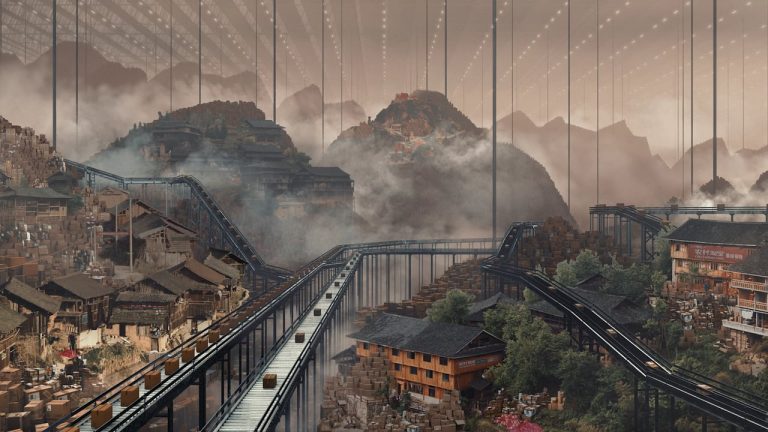
“People were so enamored of high tech. In Istanbul where I just came back from lecturing, everyone’s convinced that tech is the solution to every problem. There’s no dark side. Elon Musk can preach his latest invention to this choir, for example, the Tesla solar roof shingles. He can proclaim his vision of a solar-paneled world. But what he doesn’t talk about is the lithium lake in a fragile, invaluable ecosystem in Bolivia created by those panels…. Architects need to refocus their thinking from building on specific sites to building within networks that stretch around the world.
“In Australia, there are huge mining pits that supply aluminum for phones and laptop cases. They’re so huge they have their own weather, with the cranes getting trapped in vortexes of high winds. In China and Inner Mongolia, we filmed equally huge lakes of tailings, a stew of heavy metals and radioactivity. Sure, you can get mad at the mining companies, or the Chinese government, but in the end, it is us. It’s those glowing rectangles in our pockets that make me mad. We need to think about more than the product, make better decisions, based on where the shovel hits the ground.”

Architecture may not be about icons, but it may soon be about virtual icons and augmented reality. Curvaceous Gehry and Hadid buildings may then become obsolete, according to Young. “CGI cities are now the domain of Hollywood but will soon become the domain of architecture. Machine-driven tracking algorithms will be able to read straight edges and stripped-down cubes with far more efficiency than they can curves.”
Urban dwellers will be living in what is effectively an immense green screen, upon which a smorgasbord of augmented realities can be overlaid at the press of a button by a real estate agent. Designers will be able to offer their most select clients customized architectural channels. Afro-futurist Wakandan meets Victorian for the living room, Alderaanian-inspired kitchens to appeal to the Star Wars chef within. The street below will be ribbon candy.
The Grenfell Tower survivors may not fare quite as well, but certainly one might anticipate a kind of Venetian Las Vegas Shangri-La overlaid, however imperfectly, on the government-issued grunge Masterton sees in passing on the train from Hammersmith to Baker Street.
At some point, we have to ask is this the way we want to live?
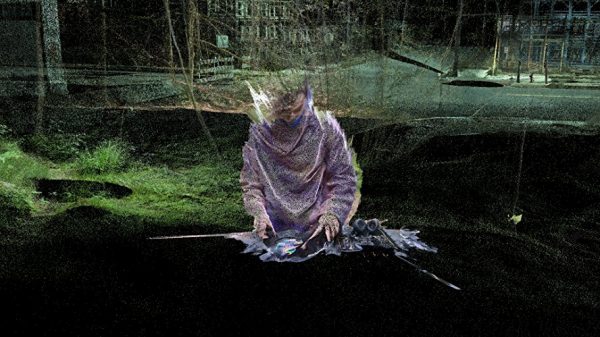
You might also like:
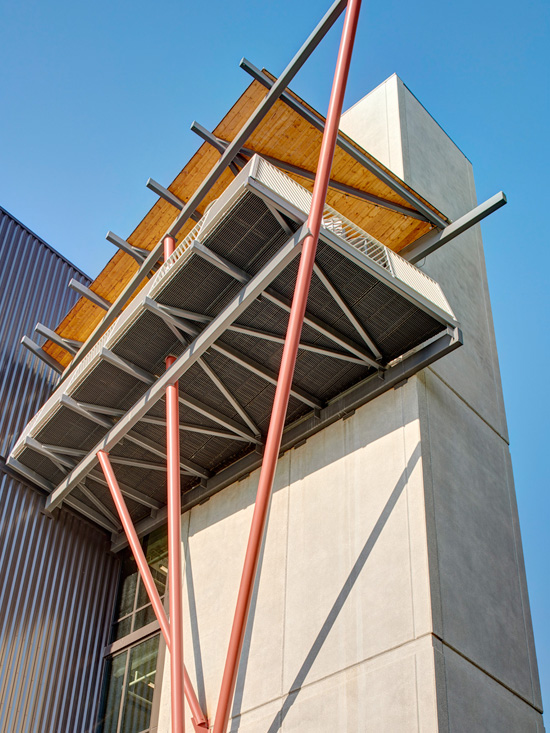
More Articles:
Archicad
Customer Stories
Education
Industry News
Tips, Resources + Downloads
Webinar Recordings